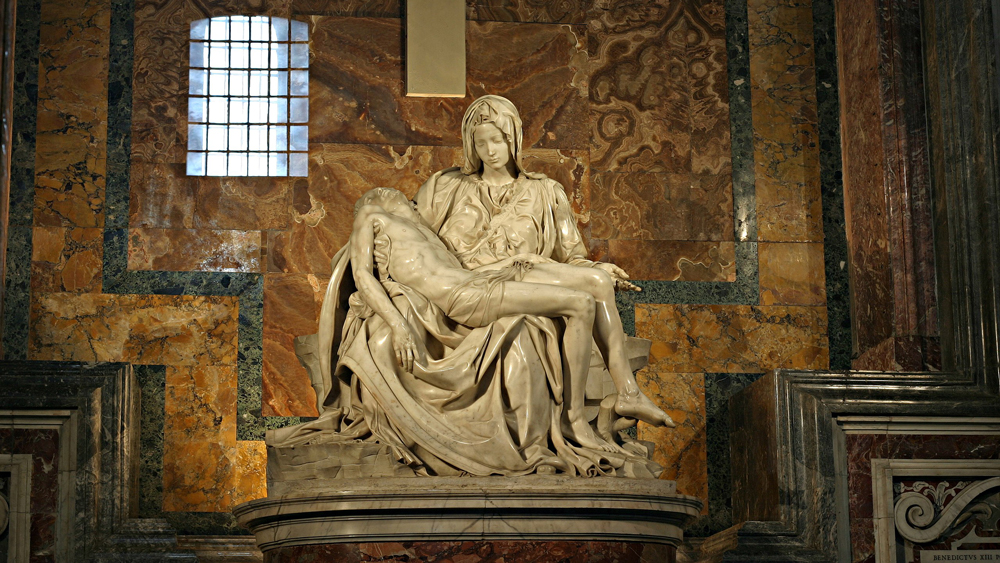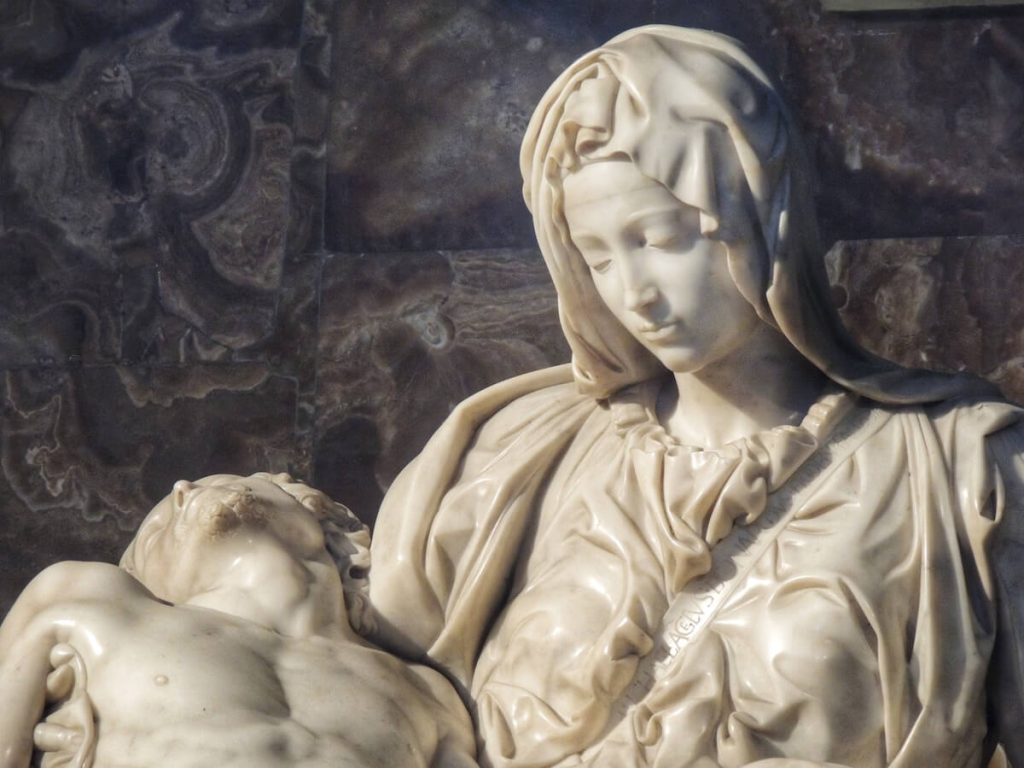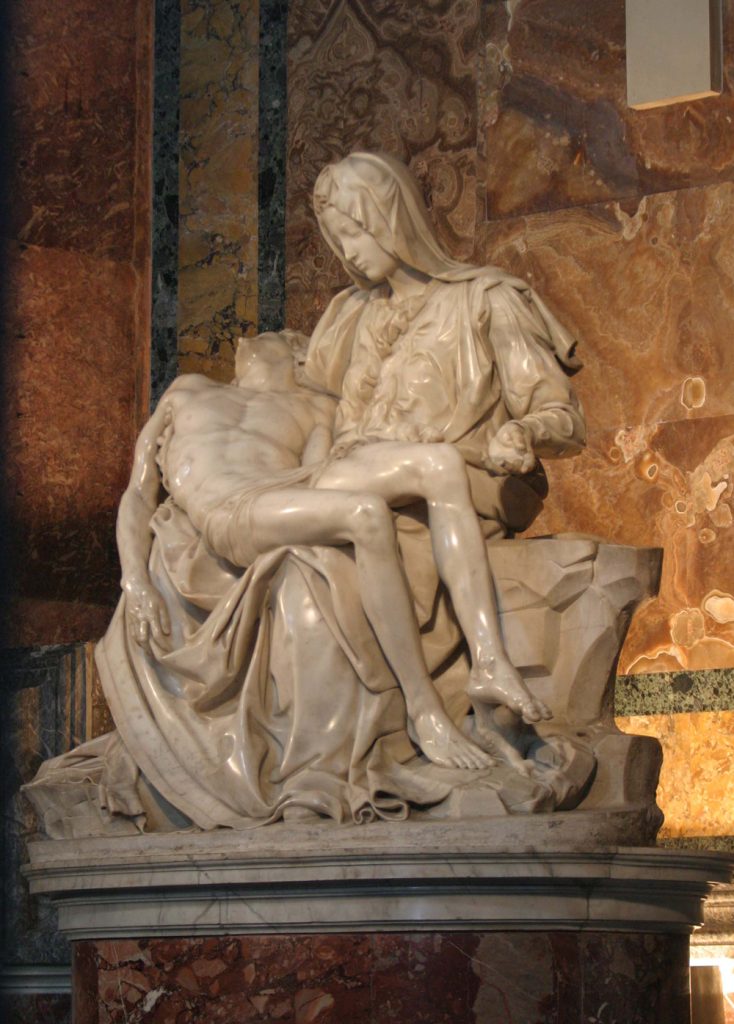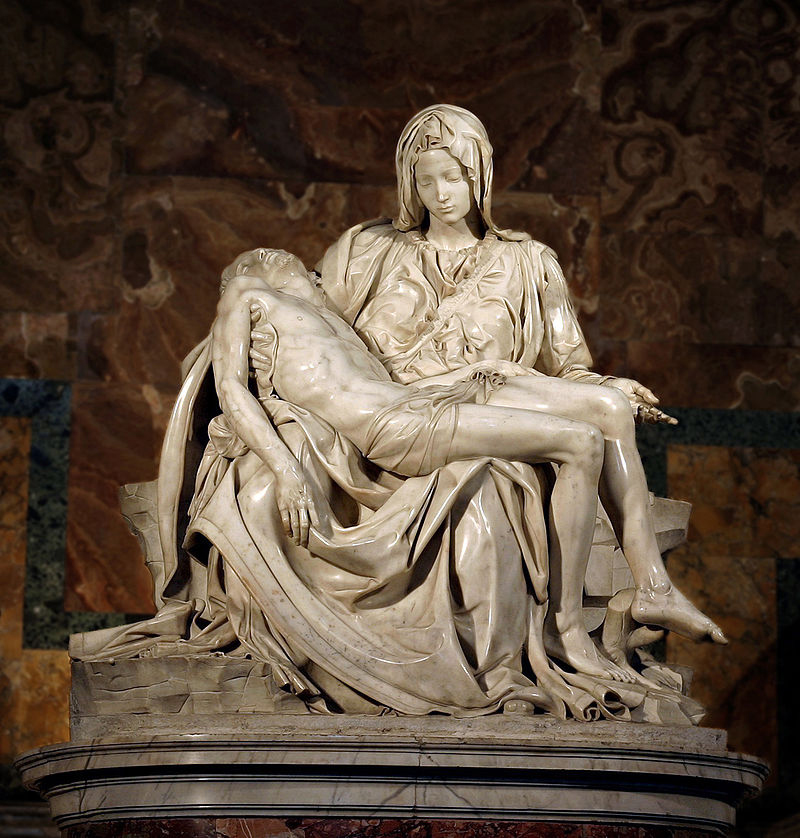Introduction

The the pieta sculpture, also affectionately known as the “Mother of Mercy,” is one of the masterpieces of Italian Renaissance master Michelangelo. Created from 1498 to 1499, this marble sculpture depicts the scene of Jesus and the Virgin Mary at the foot of Mount Gaul. It is representing the “sixth agony” of the Virgin Mary. It exists in St. Peter’s Basilica in Vatican City. And is an important representative work of Italian Renaissance sculpture. Also considered the beginning of the peak period of the Renaissance.
A Genius Sculptor
Michelangelo Buonarroti is known as one of the greatest artists of the Renaissance, with outstanding achievements in painting, sculpture, and architecture. His sculpture of “Pieta Madonna” is one of his masterpieces in the field of sculpture, showcasing his profound understanding of the structure and expressions of the human body.
The grief between mother and son

This sculpture depicts the scene of the Virgin Mary holding Jesus who has already been crucified. Jesus’ body was limping, and the expression of the Virgin Mary was filled with pain and sadness. This moment was cleverly portrayed by Michelangelo, making one feel the mother’s deep love and reluctance towards her son.
The expression of artistic conception
The sculpture of “The Virgin Compassionate Child” presents not only the emotions between mother and child, but also a profound interpretation of religious significance. This scene represents the inner struggle of the Virgin Mary in the face of the pain of Jesus being crucified, and also reflects Jesus’ sacrifice and pain for human redemption.
Complex Sculpture Techniques
Michelangelo used exquisite techniques in his sculpture to vividly depict the characters’ expressions, muscles, and clothing details. His mastery of light and shadow, as well as the carving and surface treatment of the sculpture, make this sculpture full of layering and authenticity.

The starting point of the Renaissance
The sculpture of “Pieta Madonna” is considered an important beginning of Italian Renaissance sculpture. It showcases Michelangelo’s profound understanding of human anatomy and emotional expression. And setting an example for later artists and promoting artistic creation during the Renaissance.
Cultural inheritance:
The sculpture of “Pieta Madonna” is not only a personal masterpiece of Michelangelo, but also a part of Italian culture. It reflects the fusion of religious beliefs, emotions, and art, becoming a window for people to examine human nature, beliefs, and emotions.

The Eternal Treasure of St. Peter’s Cathedral:
Today, this sculpture of the “Pieta Madonna” is in St. Peter’s Cathedral in Vatican City. It is not only a work of art, but also a symbol of Vatican City, attracting pilgrims and tourists from all over the world to come and admire.
Epilogue
Michelangelo’s sculpture of the “Pieta Madonna” is one of the masterpieces of the Italian Renaissance. Through exquisite craftsmanship and profound artistic conception, it showcases the emotional fusion between the Virgin Mary and Jesus. While also representing the fusion of religion and art. This sculpture is not only a treasure of Italian culture. But also a journey of human exploration of faith, emotions, and art.

